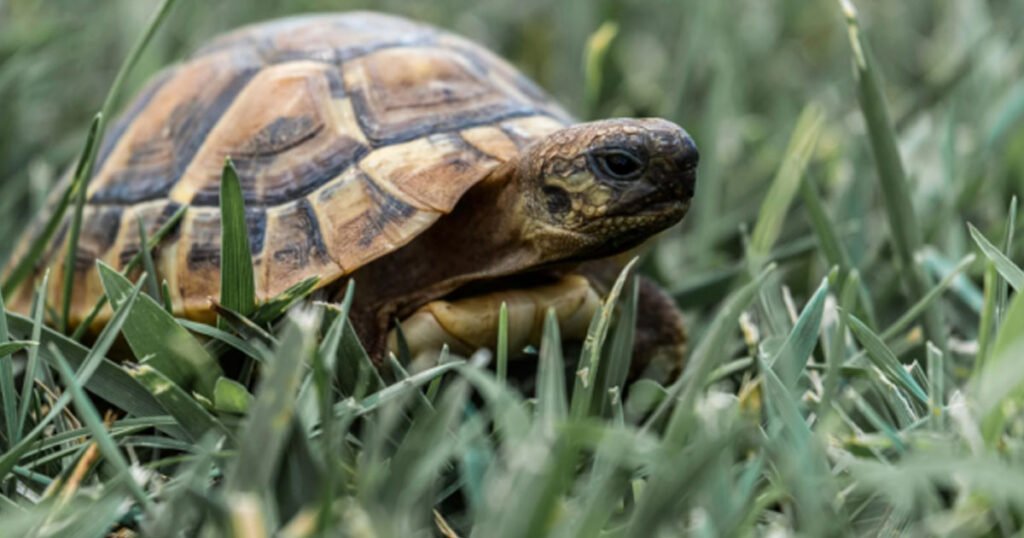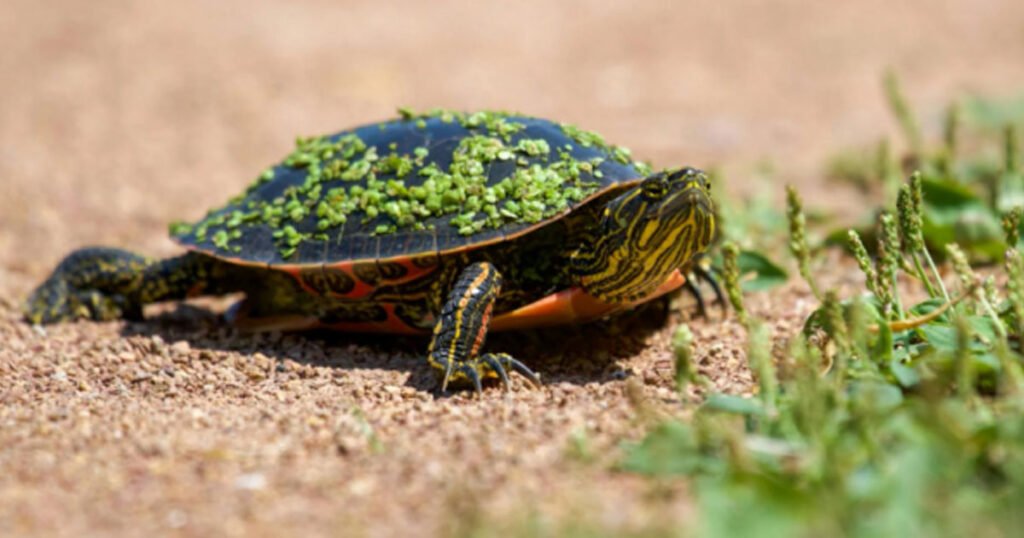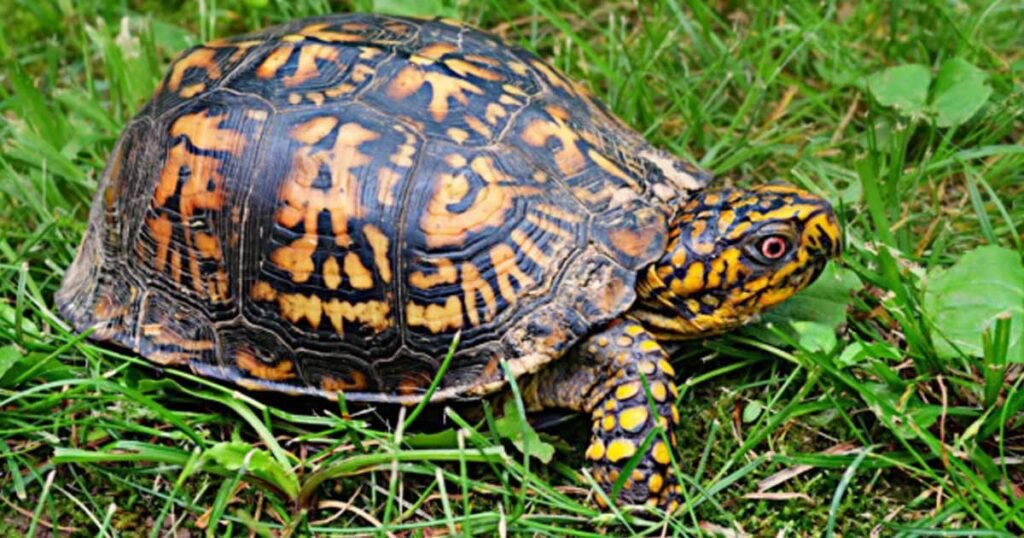Turtles are a common & interesting animal and quite familiar to many of us. You may have seen a variety of colors in turtles. Have you ever wondered, exactly “What color are turtles?” Turtles come in an astonishing array of colors, from vibrant greens to striking whites. These colors aren’t just for show – they help turtles blend into their surroundings and avoid predators.
With around 356 species and subspecies, turtles showcase a diverse palette of hues and patterns, each adapted to their unique habitats. From intricate geometric patterns to bold stripes and vibrant circles, turtles display a spectrum of captivating colors and looks. Let’s dig into the colorful world of turtles and explore the stunning hues adorning these fascinating creatures.
Table of Contents
What Color Are Turtles – Common Colors

Turtles come in a range of colors. Dark muddy green, dark brownish with gray shade, or dark caramel color is the most common. Yet, their hues vary greatly based on their habitat. In wild forests, and densely green areas, turtles often sport darker shades to blend in seamlessly.
Conversely, turtles living in lighter, less wooded environments tend to have lighter colors. These variations help them camouflage and survive in their surroundings.
While some turtles flaunt vibrant greens and earthy browns, others exhibit a mesmerizing spectrum of hues. Patterns on their shells can range from intricate carvings to bold stripes adorned with colors like red, yellow, orange, black, or white.
Turtles’ coloration serves a vital purpose: camouflage. This natural camouflage helps them evade predators and hunt effectively, ensuring their survival in diverse ecosystems.
What Causes Turtles to Have Their Colors
Turtles boast an astonishing variety of colors and patterns. Most of them change color changes as they mature. But what is the reason behind turtles having such a wide range of colors? Here is the answer
Adaptation to the environment
Turtles have evolved to match the colors and patterns of their surroundings. It allows them to blend in naturally with their environment, as we mentioned in the above section. This adaptation serves as a crucial defense mechanism, helping them avoid predators and ambush prey effectively.
Shell structure and color
The shell of a turtle, composed of the carapace and plastron, significantly influences its coloration. Typically, the carapace is darker in color, while the plastron is lighter. The reason is that turtles live in both water and on land because they’re semi-aquatic.
The top part, or the back, of turtles, is darker because this part gets less attached time in the water or on land. On the other hand, the bottom part, which is closer to the water, tends to be lighter in color. This contrast helps camouflage turtles that inhabit land and water.
Much like other creatures, turtles utilize camouflage to remain undetected. Their backsides often feature darker or more vibrant colors, while the ventral sides are lighter. This color contrast helps them blend into their surroundings, whether it’s the ocean depths or terrestrial landscapes.
Different Types Of Turtles Color

Terrestrial Turtle Colors
Land turtles, also known as terrestrial turtles, exhibit a diverse range of colors, primarily seen in tortoises or box turtles and their subspecies. These terrestrial creatures typically display hues of olive green, tan, brown, dark brown, and reddish brown. They have markings in shades of orange, yellow, olive green, or dark brown.
The Florida box turtle is a notable example of vibrant terrestrial turtles. It has a dark brown to black shell with yellow to orange markings. Additionally, their heads feature dark coloring with yellow or orange stripes or markings, contributing to their striking appearance.
Among terrestrial turtles, patterns and colors vary widely based on their habitat and species. Some tortoises, like the African spurred tortoise, exhibit intricate shell patterns in shades of brown and yellow, aiding in camouflage in dry environments. Similarly, desert-dwelling species often feature lighter colors to blend in with sandy surroundings.
Another fascinating aspect of terrestrial turtle colors is their role in species identification and communication. The unique patterns and colors on their shells and bodies serve as visual cues for species recognition. They may play a role in courtship displays and territorial signaling.
Despite their diverse appearances, terrestrial turtles share common adaptive features that help them thrive in their respective environments. As their habitats get hotter, their coloration and markings help them regulate their body temperature by absorbing or reflecting sunlight.
Semi-Aquatic Turtle Colors
Pet turtles are usually semi-aquatic, living on both land and water. These turtles display a vibrant array of colors, ranging from bright greens to deep browns. They are covered with striking red, orange, pink, or yellow markings. These colorful patterns can be seen on their faces, shells, and underbelly, extending to their legs and feet.
One of the most popular semi-aquatic turtle species is the red-eared slider, known for its distinctive red patches resembling ears, which led to its name. These sliders are commonly chosen as pets, especially beginners due to their striking appearance and ease of care.
Sea Turtles Colors
Sea turtles exhibit a range of hues from olive green to black, with common shades including yellow, green-brown, brown, reddish-brown, and black. The green sea turtle gets its name from the green coloration of its body fat, which is a result of a diet rich in green seagrass.
Sea turtles sport various aquatic-themed colors to blend into their ocean environment, aiding in predator attacks. They have markings that look like streaks, blotches, or patches in brown, black, yellow-green, green-brown, or white colors. Most sea turtles feature counter-shades of dark back and light ventral coloration, facilitating camouflage in the ocean’s depths.
Albino Turtles Color
Albino turtles, although rare, are occasionally found, often as pets due to their unique appearance. Their lack of pigmentation gives them a distinct white or yellowish hue, making them vulnerable to predators. In the wild, spotting an albino adult turtle is nearly impossible.
However, in captivity, albino turtles can grow well under proper care. While their white appearance is caused by a genetic mutation resulting in the absence of melanin, it doesn’t pose a health threat to them. This lack of pigment simply makes them look different in their natural habitats, where camouflage is crucial for survival.
A Variety Of Turtle Colors
There are so many turtle species more than 300 with different colors and shell patterns. For example, the common snapping turtle is usually dark brown or black with yellow or orange spots. Loggerhead turtles are reddish-brown with yellow markings.
The Indian star tortoise has light and dark star-shaped markings on its shell. These colors are adaptable based on their surroundings. Overall, turtles come in a variety of colors, from dark browns and blacks to vibrant greens and yellows.
What Colors Are Turtles Shells – Does Shell Color Change

Common turtle shell colors you will notice are muddy green and brownish gray. Turtles, like many animals, undergo fascinating shell color changes throughout their lives.
Besides terrestrial turtles, aquatic species, like the painted turtle, maintain their distinct shell patterns and colors from birth until death.
One intriguing example of this phenomenon is seen in terrapin turtles, particularly those found in Malaysia, Sumatra, and Borneo. These turtles undergo significant shell and body color changes, especially during mating seasons. Males, for instance, transition from pale gray to dark gray or nearly black shells to attract mates.
Moreover, the gopher tortoise, a colorful terrestrial turtle found in Florida, undergoes notable color variations from juvenile to adult. While young gopher tortoises boast vibrant yellow, orange, or brown hues with dark shells and yellow markings. Their shell colors gradually mellow into a mild tan or brown as they mature.
Baby turtles often exhibit brighter colors than adults of the same species. As they grow and mature, their colors may darken or become muted. For instance, bright green turtles in their infancy may develop darker green, brown, or even black shells as they mature. This transition highlights turtle shell colors’ dynamic nature over time.
FAQ
What Colors Are Sea Turtles?
A sea turtle’s colors range from olive green to brown, yellow, reddish-brown, and even black. Their colors help them blend in with their ocean habitats, keeping them safe from predators. It adds to their camouflage as they have distinctive markings like brown, black, yellow-green, or white.
Do Turtles from the Same Species have Different Colors?
Yes, it’s entirely possible. Turtles belonging to the same species can exhibit a range of colors, especially across different subspecies. Take slider turtles, for instance. Within this species, you’ll find variations in shell hues, from those with yellow bellies to others adorned with red markings or multiple distinguishing patterns.
Read More: What Do Turtle Eggs Look Like?
Bottom Line
The world of turtles is painted in a stunning palette of colors, showcasing nature’s diversity at its finest. From vibrant greens and yellows to earthy browns and blacks, turtles exhibit a spectrum of hues that mesmerize and captivate. Whether they dwell in the oceans, on land, or in between, their colors serve as essential tools for survival, aiding in camouflage and protection from predators.
